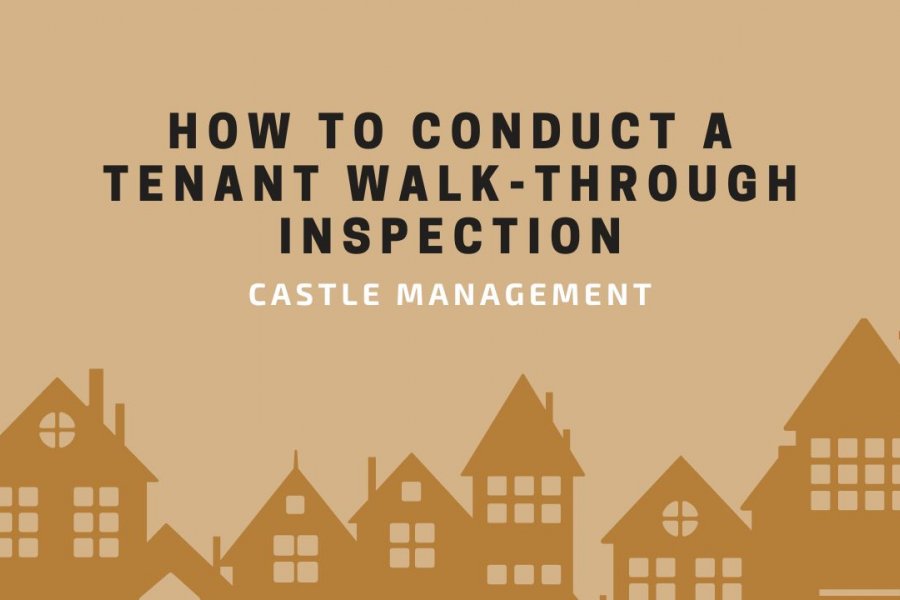
- How to Do a Walk-Through Inspection
- 1. Inspect the Property on Your Own First
- 2. Prepare a Checklist Before the Inspection
- 3. Inspect the Property with Your Tenants
- 4. Keep the Process Short and Simple
- 5. Take Photos and Videos
- 6. Give Renters a Grace Period to Report Additional Issues
- 7. Understand Landlord-Tenant Laws
- Bottom Line
As a landlord, you might think that you have less control over the state of your multi-family rental property when it’s occupied by tenants. However, you can adopt an excellent practice to keep your unit well-maintained.
A tenant walk-through inspection is one of the best ways to mitigate future property damage and set clear expectations with your new renters as soon as they move in. Tenants are more likely to actively maintain a rental property when the condition is documented before they move in. Keep reading to learn our tips for a successful walk-through inspection.
How to Do a Walk-Through Inspection
1. Inspect the Property on Your Own First
While walk-through inspections with your tenant should be completed in a short amount of time, it’s also a good idea to do a preliminary evaluation of the property after the last tenants have moved out and before the new tenants move in. This inspection will allow you to test important systems and determine if any repairs need to be done ahead of move-in.
Here are other things landlords can do:
- Switch on the air conditioner and/or heating systems
- Check that the water pressure in the sinks, showers, and toilets is sufficient
- Check if the appliances are in working order
- Make sure windows and doors are secure

You can arrange to fix damages or replace certain items before the renter moves in. As you are starting a new landlord-tenant relationship, you want to develop trust, and presenting a well-maintained unit builds the tenants’ trust in you.
If you let a tenant move into a property with a lot of maintenance issues, you might end up with a broken lease and a vacant rental unit sooner than you’d like. Tenants may also decide not to focus on maintaining the unit well to match the state it was in when they moved in.
2. Prepare a Checklist Before the Inspection
Create a checklist that breaks down all the parts of the rental property you need to take a look at during your inspection. Separate sections of the checklist by room and include any appliances, furnishings, and furniture, as well as things like the windows, floors, and walls. You can use an online checklist template or easily create a form on your own.
Include a column where you can write the condition of each of the aspects of the property during move-in and move-out. You can include another column to estimate cleaning and repair costs if damage is present.

At the bottom part of the form, you should include a space for you and your tenants to sign so you have proof that both parties agreed on the condition of the property after completing a walk-through inspection. Don’t forget to write down the date and provide a copy to the new renter.
3. Inspect the Property with Your Tenants
Before allowing a renter to move into your rental property, you should perform a walk-through inspection with the new tenant. The rationale is for both parties to acknowledge the current state of the unit and avoid potential disputes at the end of the lease.
This step also manages the expectations of the landlord and tenant. If you showcase a clean space, you would naturally expect the renter to turn over the unit in the same state. This is also the right time to discuss the difference between normal wear and tear and out-of-the-ordinary damage that results from neglect or abuse.
4. Keep the Process Short and Simple
Make sure to keep your inspection process simple. You don’t want your new renters to think that you have unrealistic expectations for them to always keep the rental property in the exact same state throughout their lease.
Referencing each detail might just end up feeling like pressure for tenants. Acknowledge that no property is totally flawless. Over-documenting can also be a waste of time, so it is best to stick with a reasonable walk-through inspection that is completed in around 20 minutes.

5. Take Photos and Videos
During a property inspection, you want to document the condition of your rental unit and take photos or videos of any issues that were present before the new tenant moved in. It’s a good practice to take close-up images to capture the details and avoid any conflicts in the future.
Keep the time-stamped photos and a digital copy of the signed inspection checklist in your records. Make sure to have backups of the pictures and videos just in case the original files disappear. These records protect you if a tenant wants to refer to the state of the rental unit before moving in.
6. Give Renters a Grace Period to Report Additional Issues
Sometimes, you just don’t notice everything, even when doing a careful inspection. This is why you should give tenants a reasonable three-day period to communicate any additional issues. Upon investigation and finding a valid issue, you should record it and find a resolution.
When the renter leaves the property, you will also know the existing potential issues that the rental has. That’s why it is beneficial to provide new renters with a grace period to assess the functionality of systems in the property. An inspection might not show that the dishwasher isn’t working but a tenant would be able to figure that out after a few days.

7. Understand Landlord-Tenant Laws
To avoid running into problems or facing penalties, make sure you’re very familiar with landlord-tenant laws. For move-in inspections, security deposit laws are especially important to understand.
If you know your state’s landlord-tenant laws, you also have a fair idea of your rights and responsibilities and the tenant’s rights and duties. You will know how to align with what is expected from you, especially with adhering to safety standards. Additionally, you will be aware of what type of deductions you can make from a renter’s security deposit.
Bottom Line
Understanding landlord-tenant laws can be complicated and inspections can be time-consuming, especially if you own a multi-family property. If you’re looking for a way to make all of this easier, consider working with the property management experts at Castle Management.
We’ll take care of security deposits, inspections, maintenance requests, tenant satisfaction, and more! Get in touch with Castle Management today to learn more about our property management services and how we can help you.
